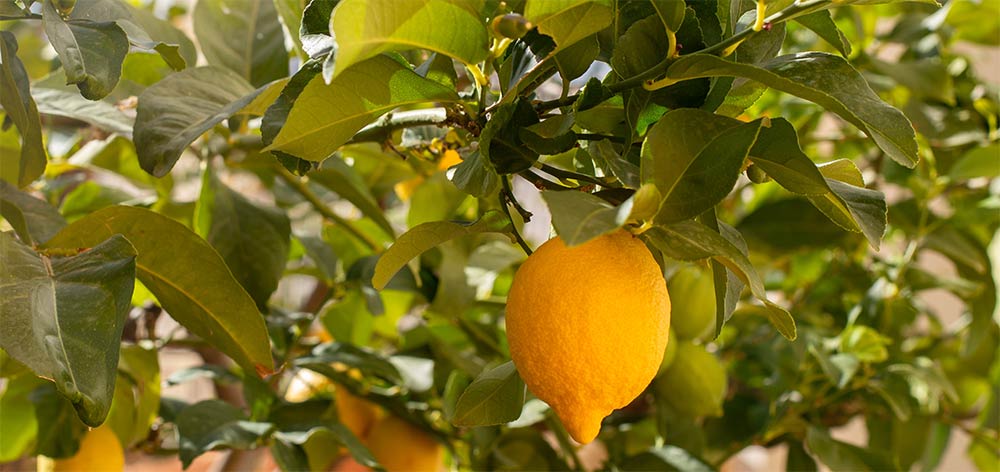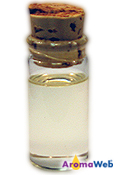Lemon Petitgrain Essential Oil
Citrus limon

Description
Lemon Petitgrain Essential Oil is steam distilled from the leaves and twigs of the lemon tree (Citrus limon). It should not be confused with that of Lemon Essential Oil that has been cold pressed from the rinds of lemons because the composition, aromatic profile, therapeutic benefits and safety for both oils is different.
Aromatically, Lemon Petitgrain Essential Oil has a bold yet sweet lemony aroma with accompanying woody and green characteristics.
If you enjoy the aromas of Lemon, Lemongrass and Petitgrain Bigarade essential oils, there is a good chance that you will like the aroma of Lemon Petitgrain Essential Oil.
The aroma is more beautifully complex than that of either Lemon, Lemongrass or Petitgrain Bigarade, but it shares some aromatic similarities with each of those essential oils. Its composition includes limonene and citral (neral and geranial) and numerous other constituents in smaller percentages.
Steffen Arctander describes Lemon Petitgrain Essential Oil as having a "very strong, fresh odor with a distinct bitter undertone, at times woody, in poor oils grassy. The dryout should be very rich and sweet, slightly floral-fruity... But the particular bitter-fresh notes, the immensely rich and tenacious depth and undertone in the odor of this oil - these are due to minor constituents." Reading Arctander's full profile for Lemon Petitgrain Essential Oil is recommended as it's quite interesting for background information on this intriguing essential oil. (Source: Steffen Arctander, Perfume and Flavor Materials of Natural Origin (Reprint Edition. Elizabeth, NJ: Pathfinder., 2017), 362-363.)
Lemon Petitgrain Essential Oil is an essential oil that can help liven up and add intrigue to citrus based essential oil blends. It blends especially well with Neroli, Petitgrain Bigarade, Lemon, Lime, Grapefruit, Mandarin, Lavender, Ylang Ylang, Rosemary, Coriander, Cardamom, Black Pepper, Virginian Cedarwood and many other citrus, herbaceous and wood essential oils.
The composition of Lemon Petitgrain Essential Oil has some key differences from that of Petitgrain Bigarade Essential Oil. For example, Lemon Petitgrain Essential Oil does not have the significant linalyl acetate composition that Petitgrain Bigarade Essential Oil has.
There is not much documented information available on the therapeutic uses of Lemon Petitgrain Essential Oil. I haven't seen many reliable GC-MS/GC-FID reports for Lemon Petitgrain Essential Oil, so I hesitate to comment on the typical percentages for key constituents as the information could be wrong.
Lemon Petitgrain Essential Oil is most widely used in perfumery applications due to its lovely lemony, green, woody aroma.
Despite the limited information that I do have available, I see Lemon Petitgrain Essential Oil as showing promise in helping to combat stress, uplift and rejuvenate the mind and to help promote focus. It is an essential oil worth appreciation and study.

Lemon Petitgrain Essential Oil Benefits and Uses
- Perfumery
- Stress
- Anxiety
- Mental Fatigue
Botanical Name
Plant Family
Common Method of Extraction
Lemon Petitgrain Essential Oil is steam distilled.
Plant Part Typically Used
Color
Clear to Pale Yellow
Consistency
Thin
Perfumery Note
Top
Strength of Initial Aroma
Medium to Strong
Aromatic Description
Lemon Petitgrain Essential Oil smells bold yet sweet and lemony with accompanying woody and green characteristics. Read the Description section at the top of this page for a more detailed explanation of the scent.
Major Constituents
- Geranial
- (+)-Limonene
- Neral
- Geraniol
- B-Pinene
- Neryl acetate
- Nerol
- a-Terpinyl acetate
- Linalyl acetate
- Geranyl acetate
- Citronellal
See Essential Oil Safety for more complete list of typical constituents.
Source: B.M. Lawrence, Progress in Essential Oils (Perfumer & Flavorist 20, No. 1, 1995), 114-117. Source cited in Robert Tisserand and Rodney Young, Essential Oil Safety (Second Edition. United Kingdom: Churchill Livingstone Elsevier, 2014), 333.
Lemon Petitgrain Essential Oil Safety Information
Tisserand and Young recommend a dermal maximum of 1.2% for Lemon Petitgrain Essential Oil to minimize the risk of skin sensitization due to the content of citral (neral + geranial) present in this essential oil. Reading Tisserand and Young's full profile is recommended. [Robert Tisserand and Rodney Young, Essential Oil Safety (Second Edition. United Kingdom: Churchill Livingstone Elsevier, 2014), 333.]
Lemon Petitgrain Essential Oil References
- Robert Tisserand and Rodney Young, Essential Oil Safety (Second Edition. United Kingdom: Churchill Livingstone Elsevier, 2014), 333.
- Steffen Arctander, Perfume and Flavor Materials of Natural Origin (Reprint Edition. Elizabeth, NJ: Pathfinder., 2017), 362-363.
General Safety Information
Do not take any oils internally and do not apply undiluted essential oils, absolutes, CO2s or other concentrated essences onto the skin without advanced essential oil knowledge or consultation from a qualified aromatherapy practitioner. For general dilution information, read AromaWeb's Guide to Diluting Essential Oils. If you are pregnant, epileptic, have liver damage, have cancer, or have any other medical problem, use oils only under the proper guidance of a qualified aromatherapy practitioner. Use extreme caution when using oils with children and be sure to first read the recommended dilution ratios for children. Consult a qualified aromatherapy practitioner before using oils with children, the elderly, if you have medical issues or are taking medications. Before using this or any essential oil, carefully read AromaWeb's Essential Oil Safety Information page. For in-depth information on oil safety issues, read Essential Oil Safety by Robert Tisserand and Rodney Young.
Shelf Life
Important Information About the Profiles
The essential oil information provided on AromaWeb is intended for basic educational purposes only. The references to safety information, test results, constituents and percentages is generalized information. Essential oils can vary greatly in composition. The data is not necessary complete and is not guaranteed to be accurate. The essential oil photos are intended to represent the typical and approximate color of each essential oil. However, essential oil composition and color can vary based on harvesting, distillation, age of the essential oil and other factors. Profiles for several CO2 Extracts and absolutes are included within the directory, and are denoted as such.
